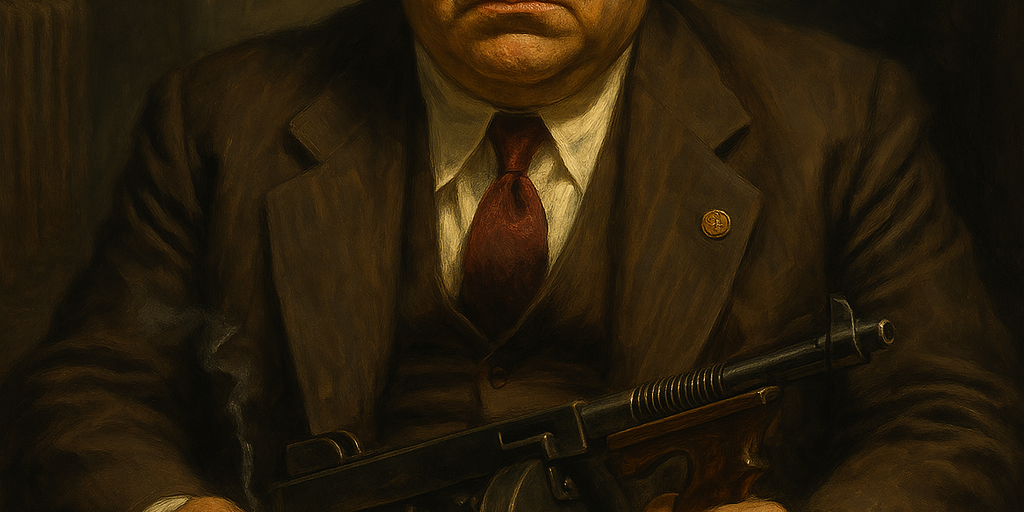In the annals of Pittsburgh’s dark and shadowy history, one name strikes a particularly ominous chord: John Bazzano. As the ruthless mafia don who ruled the Steel City’s underworld during the early 20th century, Bazzano orchestrated one of the bloodiest chapters of organized crime in Western Pennsylvania. His reign was defined by backroom deals, brutal executions, and a thirst for absolute power—a legacy that still echoes in the city’s mob folklore today.
Early Life and the Rise to Power
Born Giovanni Bazzano in 1890 in Sicily, he immigrated to the United States as a young man, settling in Pittsburgh’s Little Italy. Like many immigrants of the era, he began life in the working-class trenches—laboring in steel mills, selling produce, and running errands for more established mob figures. But Bazzano had bigger aspirations. He quickly caught the attention of the La Mano Nera (Black Hand) and later joined the more structured Italian-American Mafia factions taking root in Pittsburgh.
By the 1920s, he had aligned himself with Salvatore Calderone, the dominant boss of Pittsburgh’s Italian underworld. But loyalty had its limits—especially for a man as ambitious as Bazzano.
The Calderone Coup
In 1929, Calderone’s grip on power began to wane, and Bazzano saw his chance. Through a calculated mix of charm, muscle, and betrayal, he eliminated Calderone and seized control of the Pittsburgh mob. This bold move not only shocked the local Italian-American community but also cemented Bazzano’s reputation as a cold, calculating power player.
Unlike his predecessor, Bazzano wasn’t interested in quiet domination. He wanted full control—especially over the lucrative rackets flowing through the Strip District, South Side, and Hill District.
Explore how these neighborhoods evolved in our deep dive: The Transformation of the Strip District Over the Years
The Volpe Brothers Massacre
Bazzano’s most infamous act came in 1932 when he ordered the assassination of the Volpe Brothers, a rival family from Turtle Creek. The brothers—James, Arthur, and John—had been muscling in on Bazzano’s numbers racket and bootlegging profits. On July 29, 1932, all three were gunned down in broad daylight inside the Volcano Café in what became one of the most brazen mob hits in Pittsburgh history.
The massacre stunned the city and drew national media attention, painting Pittsburgh as a battleground in the national mob war during the tail end of Prohibition.
Explore the wider crime scene of the era: Pittsburgh’s Notorious Gangsters and Crime Stories
Retribution and Bazzano’s Grisly End
While Bazzano may have thought his iron grip had been secured, the murders drew unwanted attention from New York’s Five Families. Bazzano had violated one of the cardinal rules of the National Crime Syndicate: don’t kill made men without approval.
In August 1932, Bazzano was summoned to New York under the pretense of a peace meeting. Days later, his body was found stuffed in a burlap sack in Brooklyn—stabbed and strangled, with his mouth full of canary feathers. The feathers were symbolic: a punishment for a “canary” who sang out of turn.
The Legacy of Bazzano’s Reign
John Bazzano’s legacy is a cautionary tale of ambition, blood, and betrayal. His actions led to a significant reorganization of Pittsburgh’s Mafia structure. After his death, control shifted to the LaRocca family, who would dominate Pittsburgh’s mob scene for decades.
Some of the speakeasies and hideouts used by Bazzano’s crew eventually transformed into the oldest bars still standing in Pittsburgh, giving modern patrons a ghostly connection to the city’s underworld past.
More Mob Legends, Power Struggles, and Blood Oaths
John Bazzano’s story is just one chapter in a much larger criminal saga. Step into our full Pittsburgh Mafia & Crime History collection to uncover what came before—and what happened after.
From the rise of the LaRocca family to infamous heists, secret mob tunnels, and outlaws who shook the city, this hub reveals how deep Pittsburgh’s underworld really goes.
Explore the Full Crime History →








